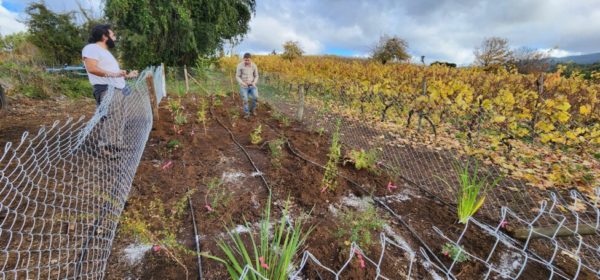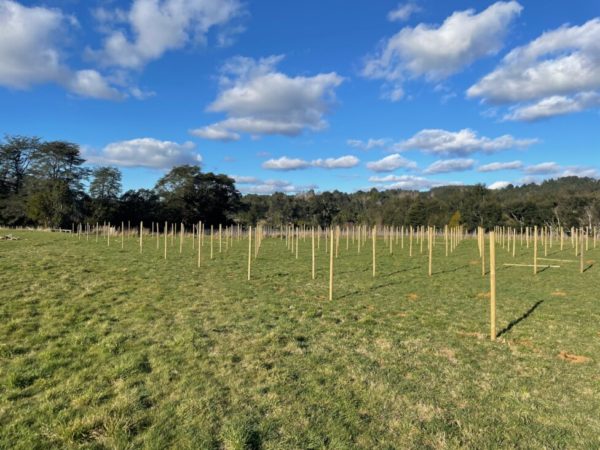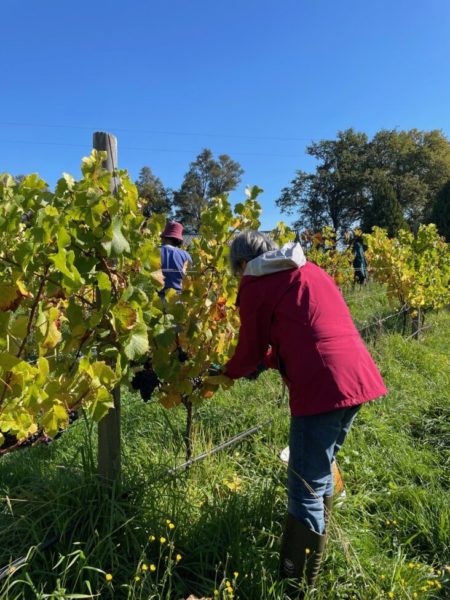Chilean Wine Industry Migrates South Due to Climate Change

HAVANA TIMES – Climate change is affecting Chile with water shortages and rising temperatures, and among its many impacts, it has already forced both large and small wine producers to migrate south in search of better conditions for their vines.
The territory of this elongated South American country of 19.5 million inhabitants benefits from natural protection against pests that affect vineyards, being flanked by the Andes mountain range and the Pacific Ocean on its eastern and western borders, and by the Atacama Desert and Antarctic territory to the north and south respectively.
“We are a biogeographic island. Chile is full of natural barriers, so we don’t have many pests. Not just any species manages to cross the borders and establish itself here,” explained Olga Barbosa, Ph.D. in Ecology and academic at the private Universidad Austral de Valdivia.
This uniqueness enables a “sustainable viticulture that bets on quality rather than quantity,” she added in a conversation with IPS from the city of Valdivia, located about 770 kilometers south of Santiago, the capital of the province of the same name and part of the southern Los Rios region.
“We have unique characteristics because we are naturally unique,” Barbosa said, alternate director of the Institute of Ecology and Biodiversity, which has led numerous sustainability projects with vineyards for 15 years.
According to 2023 data, Chile is the fourth-largest wine exporter in the world, behind France, Italy, and Spain.
Large vineyards remain in the central regions of O’Higgins and Maule but are increasingly moving south, particularly to the BioBío region, although they are already experimenting with initiatives in even more southern regions.
Small-scale winemakers, on the other hand, are establishing themselves in the regions of Araucanía and Los Ríos, south of BioBío. They are even venturing into more southern places like Chiloé Island and the municipality of Coyhaique, in the Aysén region, the second southernmost in the country, just behind Magallanes.
Barbosa admitted that in the Valdivia province “it is very difficult to produce wine. The grapes grow well, of very high quality and at different times than in the central region, but there is a shortage of analysis laboratories.”
“Most vineyards that can make wine do so with the best possible conditions in their cellars, but it is a gigantic challenge,” she stated.

Two Experiences in Valdivia
Viviana Valdivia, an agronomist, works at the Rebellin small family vineyard, covering 3.5 hectares, located 15 kilometers from the city of Valdivia.
Rebellín started in 2019 and now produces 5,000 kilos of grapes that are turned into 2,200 liters of wine, vinified on-site. It has chardonnay, pinot noir, and pinot gris vines.
“We are from the south, and grapes have always been here, although on a small scale. The vineyard emerged seeking diversification and doing different things because the south was eternally relegated to potatoes, prairies, and berries,” Valdivia explained from the family vineyard.
Rebellín opted for natural processes. It has manual harvesting, does not use chemicals to burn the grass, has geese that help control it, and uses native floral plants to prevent insects.
“White wines fare better here. This is a very cold area in winter, but summers tend to be warm though not as hot as in the central region,” the engineer said about the climate in Chile’s southern seasons.
At Rebellín, the harvest is very limited to the first and second weeks of April. “We cannot harvest earlier because there is not enough sun, and later it rains, causing the grapes to become waterlogged,” Valdivia specified.
Luis Moller has been developing the Trapi del Bueno vineyard, covering eight hectares, since 2010, located in the municipality of La Union, also in the Los Ríos region and 922 kilometers south of Santiago.
“We produce 40,000 kilos with cool-climate vines. Only one red, pinot noir, and chardonnay, sauvignon blanc, and riesling,” he detailed in a conversation with IPS from his vineyard.
“We come from the central region,” Moller said about the decision he and his partner made to find a location for their winemaking venture in the south.
“The experience has been stimulating but not without problems. Along the way, we learned how the varieties behave. We have had to replant many times,” he explained.
He added that the southern climatic conditions have helped. “We have more extreme characteristics in terms of maximum and minimum temperatures. Colder but also warmer than in the Central Valley,” he detailed.
He also mentioned that there are available water courses. And there is always rain, and the land resists because it is particularly permeable.
“We reproduce a typical characteristic of calcareous soils that give mineral quality to the wines, which is highly desired, sought after, and difficult to find,” he emphasized.
Moller recalled that initially, they thought they wouldn’t need to control low temperatures due to the slopes. “But we had very pronounced frosts during the budding periods (September-October) and had to adjust our project and invest in a frost control program,” he explained.
He emphasized that, nevertheless, “we have a lot of sun, much light, and greater photosynthesis and grape ripening capacity.”

Slow Migration and Good Figures
As temperatures and cold hours change, the quality of the terroir— the French term used in viticulture to refer to the set of factors involving soil, topography, and microclimate that influence vines and wine quality— is altered.
Thus, the migration of large vineyards south has been slow and is still concentrated in the BioBío region and its northern neighbor, Maule, while it has not yet approached Valdivia and the rest of the Los Ríos region.
In Maule, the average annual rainfall for 2023 was 740.6 millimeters, while in Valdivia it reached 1,313 millimeters.
In Chile, a country where the first grapevines were brought by Spanish conquistadors in the 16th century and the first harvests occurred in the latter half of that century, there are currently 120,000 hectares of vineyards dedicated to winemaking, of which, beyond Mulchén in Biobío, there are only 200 so far.
If the negative effects of climate change intensify, large vineyards with financial capacity are expected to migrate further south. Small producers, on the other hand, have almost no capacity for relocation due to a lack of resources, being rooted in place, and having cultural ties.
The country became a major wine producer in the 1990s, and its total wine exports in 2023 reached 677.6 million liters, generating US $1.514 billion. The main destinations were Brazil, China, and the United States.
In Chile, there are 11,697 wine producers and about 394 exporting companies, some with large foreign capital, although 76% are small and medium-sized enterprises.
Advantages and Precautions for Migration
Barbosa notes that the expansion and search for new sites to deal with rising temperatures and lack of rainfall began with vineyards on the coast, even in the central region, due to the moderating effect of the sea on the climate.
“That same thing happens further south,” she added, before noting that migration continues and is not limited to the Los Ríos and Los Lagos regions, “because we have vineyards that are doing well in Chiloe and a little further north, in Araucania.”
This is possible because “innovation in winemaking methods has been ongoing.” “Climate change has allowed exploration in other areas because the climatic conditions are good,” she specified.
She asserts that the main conclusion after 15 years of Institute of Ecology and Biodiversity projects with vineyards is the need to protect surrounding ecosystems.
“If I move my lands and expand south, towards cooler climates, I have to consider what I have around me today, because that system won’t be able to move south,” she explained.
The Institute of Ecology and Biodiversity helps winemakers understand where the climate will be favorable in the context of climate change.
“But we always emphasize the importance of conserving biodiversity and maintaining native vegetation. If there isn’t much, promote and restore native vegetation and avoid invasive exotic species,” she noted.
“Where we have good wine is where nature helps and supports that agriculture,” Barbosa emphasized. “We continue to verify the terroir. In the south, there are unique conditions that we need to conserve,” she concluded.
First published in Spanish by IPS and translated and posted in English by Havana Times.





